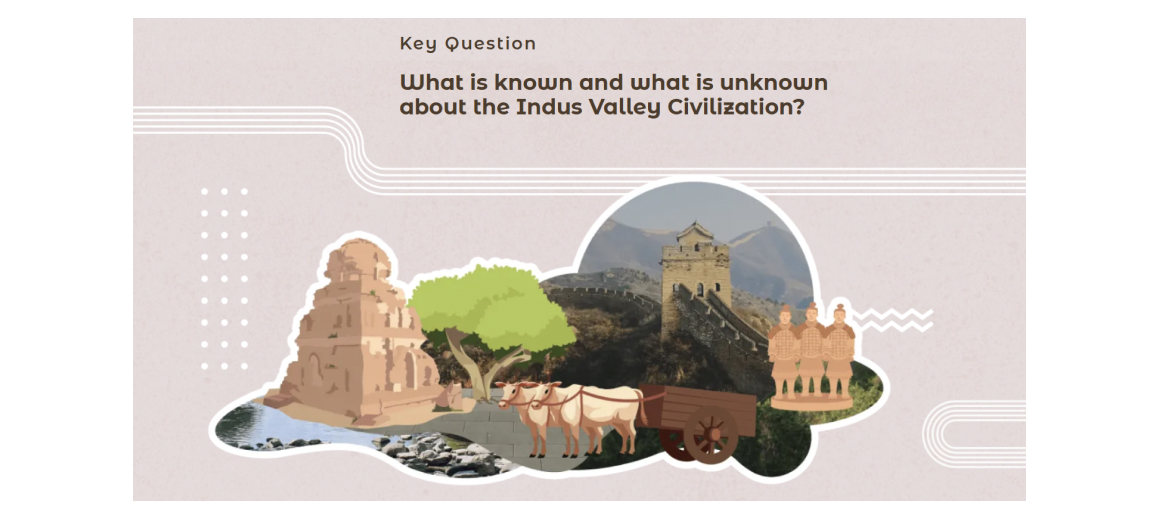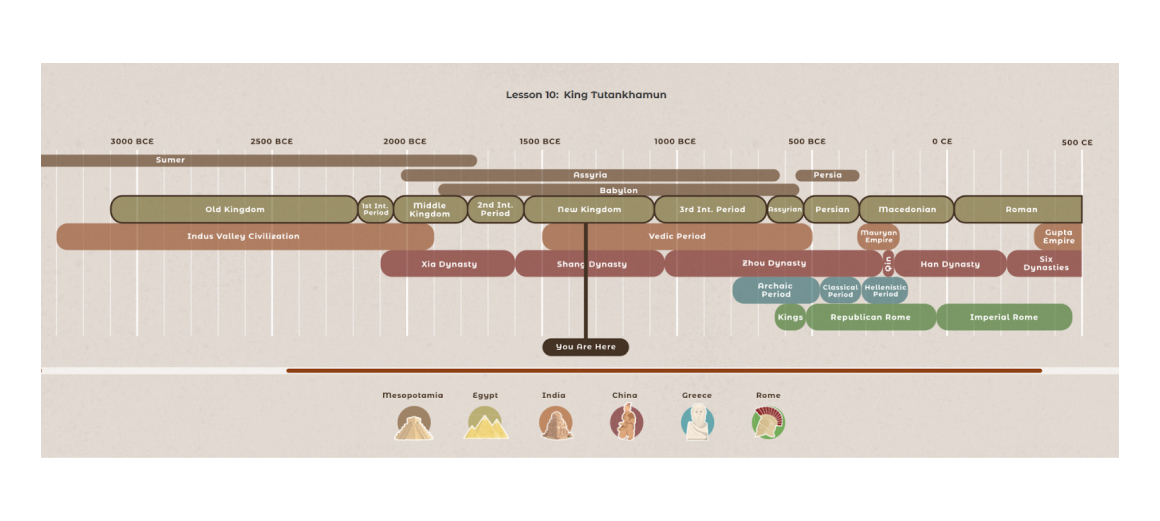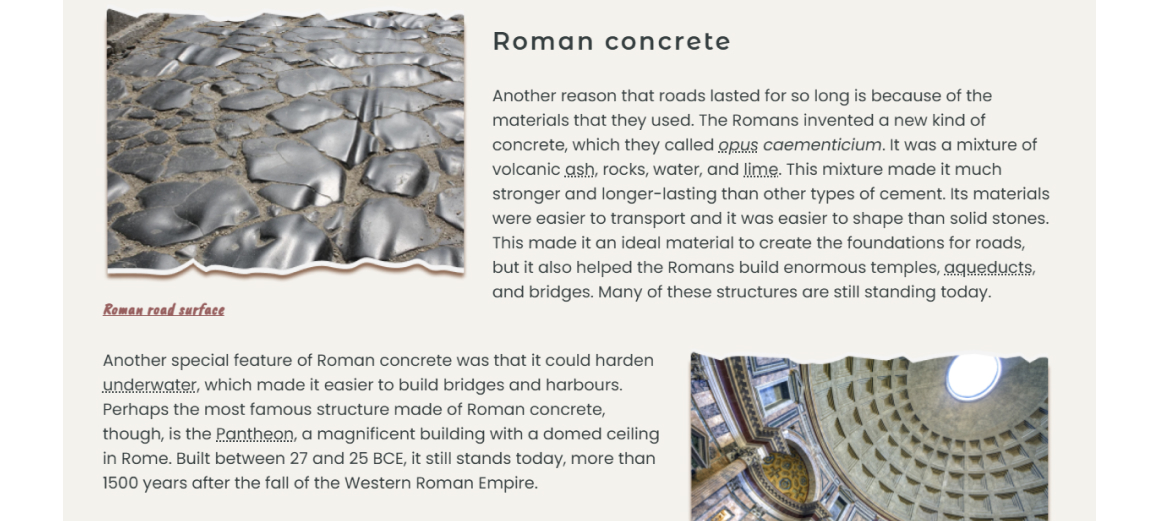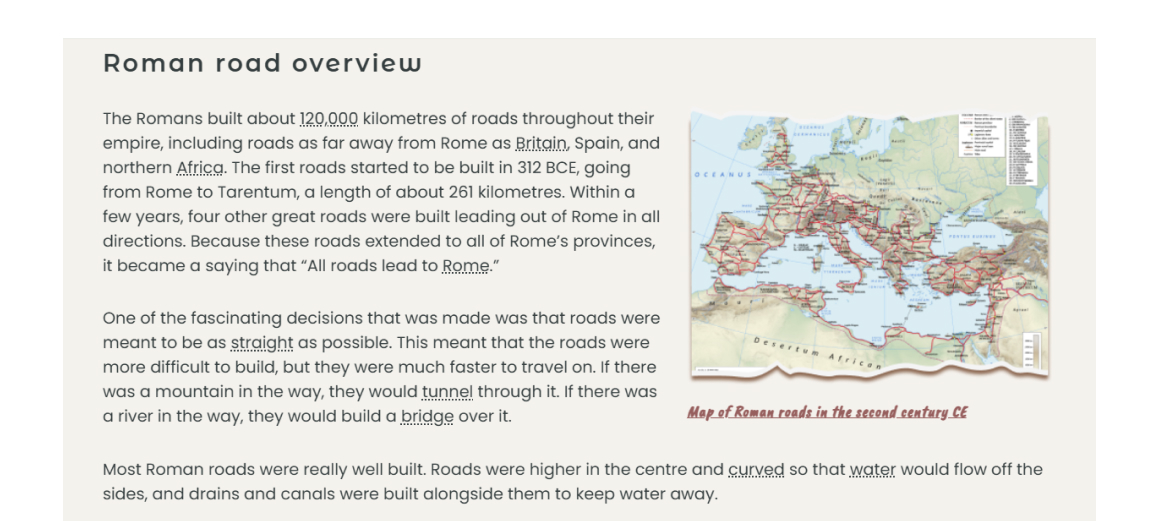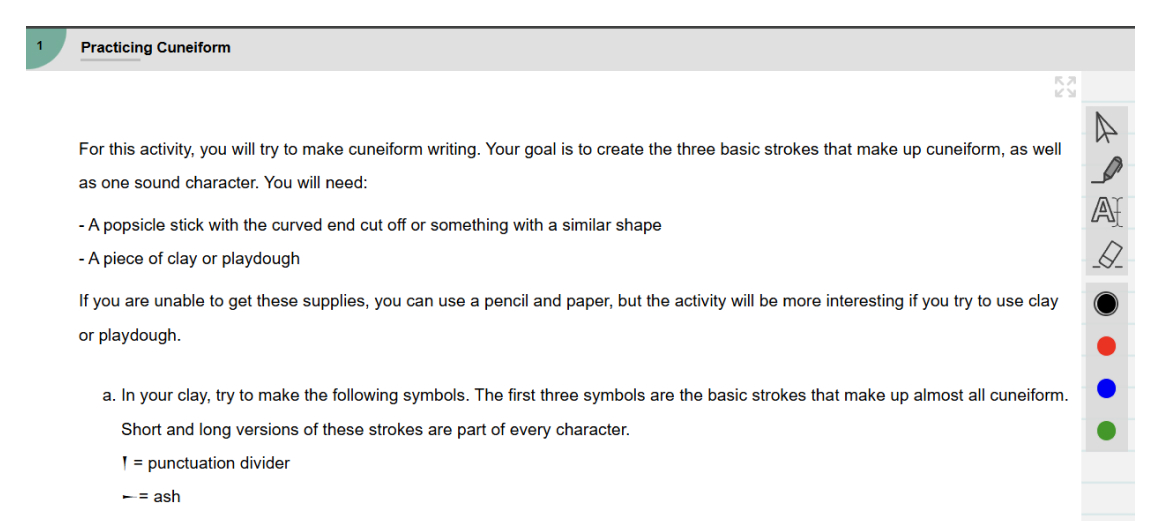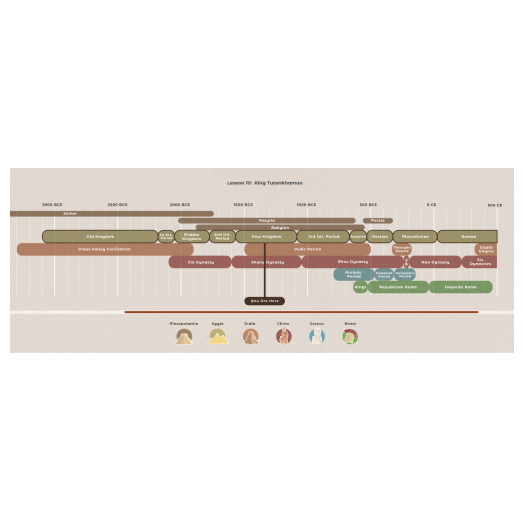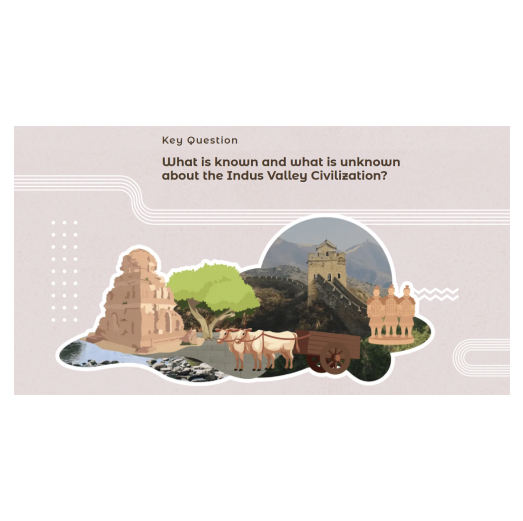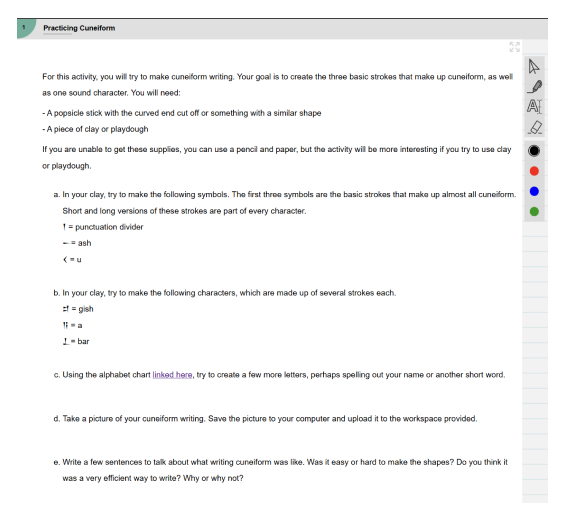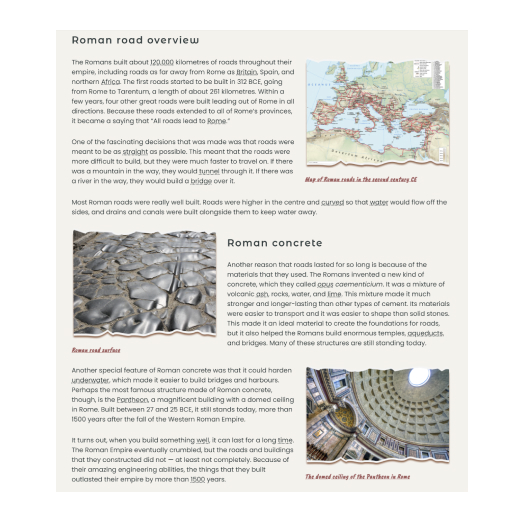Social Studies 7
The big question for Social Studies 7 is, “What did ancient civilizations leave behind that we can learn from today?” This course seeks to give students a well-rounded overview of the ancient world from prehistoric times up until the fall of the Roman Empire. Students will look at government, architecture, technological developments, philosophical developments, religious beliefs, and literature from the ancient world. In particular, students will learn why the things that these civilizations accomplished are important for the way we live our lives today, and question whether we can learn lessons from the successes and mistakes of these civilizations.
Special features of this course include:
- A scrolling timeline at the top of most lessons orients the student to when and where they are in history
- Many readings include an audio file, improving accessibility
- Note packages for readings highlight key terms and ideas
- Self-assessment questions are provided, allowing students to check their understanding of key concepts
- Auto-marked quizzes allow for easy assessment of students’ grasp of basic facts
- Interactive games make reviewing concepts engaging and fun
- Topic and format choice is given in most major projects, allowing students to choose areas of study that are of particular interest to them
Table of Contents
Unit 1: Before Civilization
Getting Started
- Lesson 1: Introduction to Social Studies 7
- Lesson 2: What Do People Need to Survive?
- Lesson 3: Prehistoric Humans
Before Cities and Civilizations
- Lesson 4: Hunters and Gatherers
- Lesson 5: Homes and Migration
- Lesson 6: Tools and Technologies
The Agricultural Revolution
- Lesson 7: The Agricultural Revolution
- Lesson 8: Was the Agricultural Revolution a Good Thing?
What is a Civilization?
- Lesson 9: Civilizations
- Lesson 10: How Civilizations Develop
- Lesson 11: How Civilizations Fall
Make Your Own Civilization
- Lesson 12: Civilization Creation: Planning
- Lesson 13: Civilization Creation: Presenting
Unit 2: Mesopotamia and Egypt
Mesopotamia, Part 1
- Lesson 1: Introduction to Sumer
- Lesson 2: Cuneiform and Writing
- Lesson 3: The Epic of Gilgamesh
Mesopotamia, Part 2
- Lesson 4: Babylon
- Lesson 5: The Code of Hammurabi
- Lesson 6: Assyria
Egypt, Part 1
- Lesson 7: The History of Ancient Egypt
- Lesson 8: The Nile River
- Lesson 9: Egyptian Religion
Egypt, Part 2
- Lesson 10: King Tutankhamun
- Lesson 11: The Pyramids
- Lesson 12: Searching for Evidence
Virtual Museum
- Lesson 13: Virtual Museum
Unit 3: India and China
The Indus Valley Civilization
- Lesson 1: Indus Valley Civilization: History
- Lesson 2: Indus Valley Civilization: Innovations
- Lesson 3: Indus Valley Civilization: Trade
Ancient India
- Lesson 4: Ancient India: Hinduism
- Lesson 5: Ancient India: Buddhism
Ancient China, Part 1
- Lesson 6: The History of Ancient China
- Lesson 7: Chinese Innovations and Trade
Ancient China, Part 2
- Lesson 8: Chinese Folk Religion and Daoism
- Lesson 9: Confucianism
Indigenous Beliefs and Religion Report
- Lesson 10: Spiritual Beliefs of Indigenous Peoples
- Lesson 11: Religion Report Compilation
Unit 4: Ancient Greece
Ancient Greece: History
- Lesson 1: The History of Ancient Greece
- Lesson 2: The Persian Empire
- Lesson 3: The Greco-Persian Wars
Ancient Greece: Famous Greeks
- Lesson 4: Socrates, Plato, and Aristotle
- Lesson 5: Homer
- Lesson 6: Alexander the Great
Ancient Greece: Government Systems
- Lesson 7: Spartan Oligarchy
- Lesson 8: Athenian Democracy
Ancient Greece: Culture
- Lesson 9: Greek Sculpture, Art, and Architecture
- Lesson 10: The Olympics
- Lesson 11: Greek Food and Clothing
The Fall of Greece Project
- Lesson 12: The Fall of Greece Project
Unit 5: Ancient Rome
Ancient Rome: History
- Lesson 1: An Overview of Roman History
- Lesson 2: The Roman Republic
- Lesson 3: The Roman Empire
Ancient Rome: Innovations and Inventions
- Lesson 4: Roman Roads and Concrete
- Lesson 5: Aqueducts
Ancient Rome: Roman Army
- Lesson 6: Roman Army: Size and Tactics
- Lesson 7: Roman Army: Equipment
- Lesson 8: Gladiators
Ancient Rome: Christianization and Decline
- Lesson 9: Constantine and the Christianization of Rome
- Lesson 10: The Decline of Rome
Ancient Rome: Lessons From the Past
- Lesson 11: Lessons From Ancient Rome
Unit 6: Final Assessment
Final Project, Part 1
- Lesson 1: Final Project Preparation
- Lesson 2: Final Project Writing
Final Project, Part 2
- Lesson 3: Final Project Creation
- Lesson 4: Project Finalization
Course Features
- A scrolling timeline at the top of most lessons orients the student to when and where they are in history
- Many readings include an audio file, improving accessibility
- Note packages for readings highlight key terms and ideas
- Self-assessment questions are provided, allowing students to check their understanding of key concepts
- Auto-marked quizzes allow for easy assessment of students’ grasp of basic facts
- Interactive games make reviewing concepts engaging and fun
- Topic and format choice is given in most major projects, allowing students to choose areas of study that are of particular interest to them
Experience a lesson as your students would
